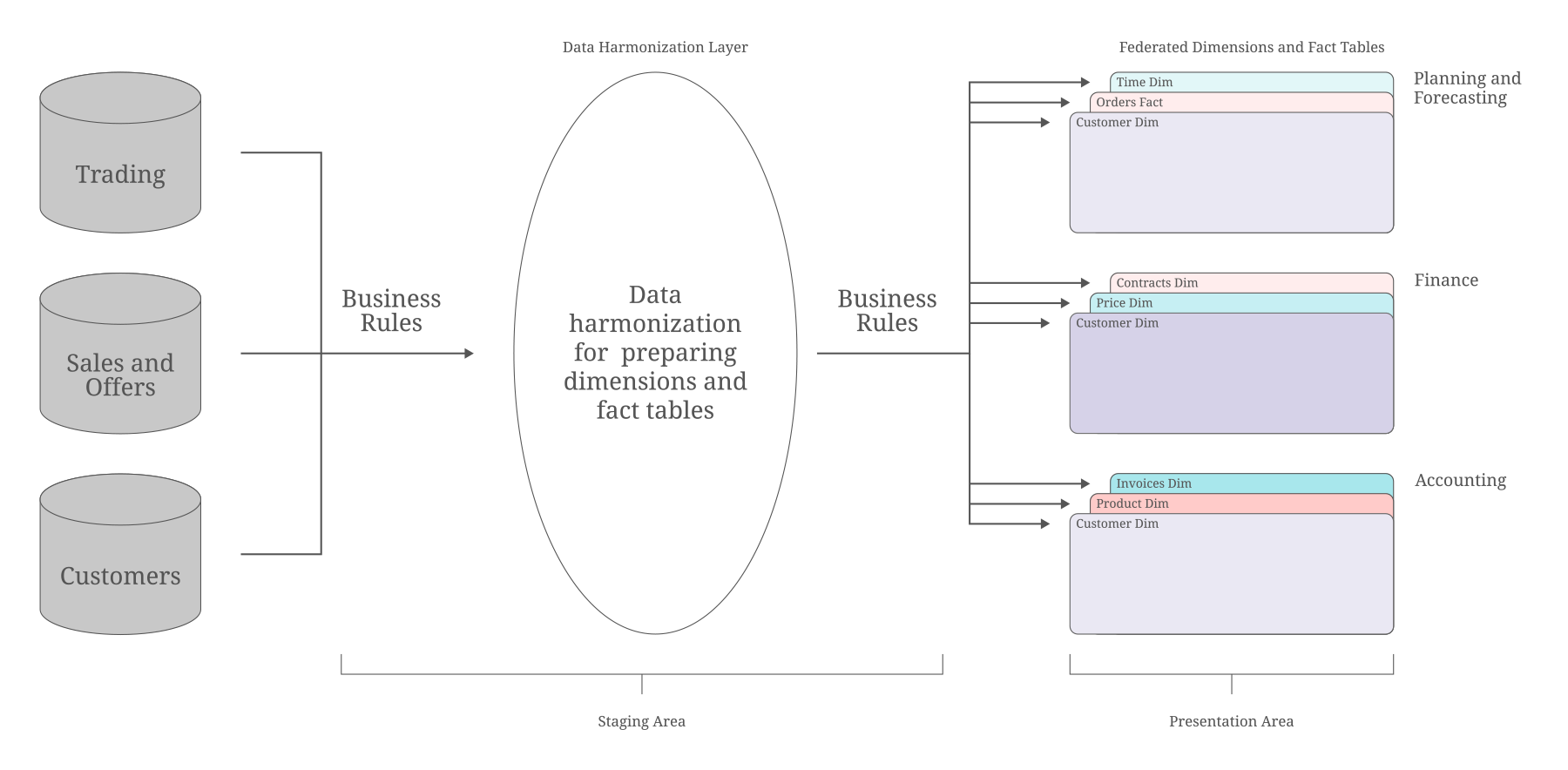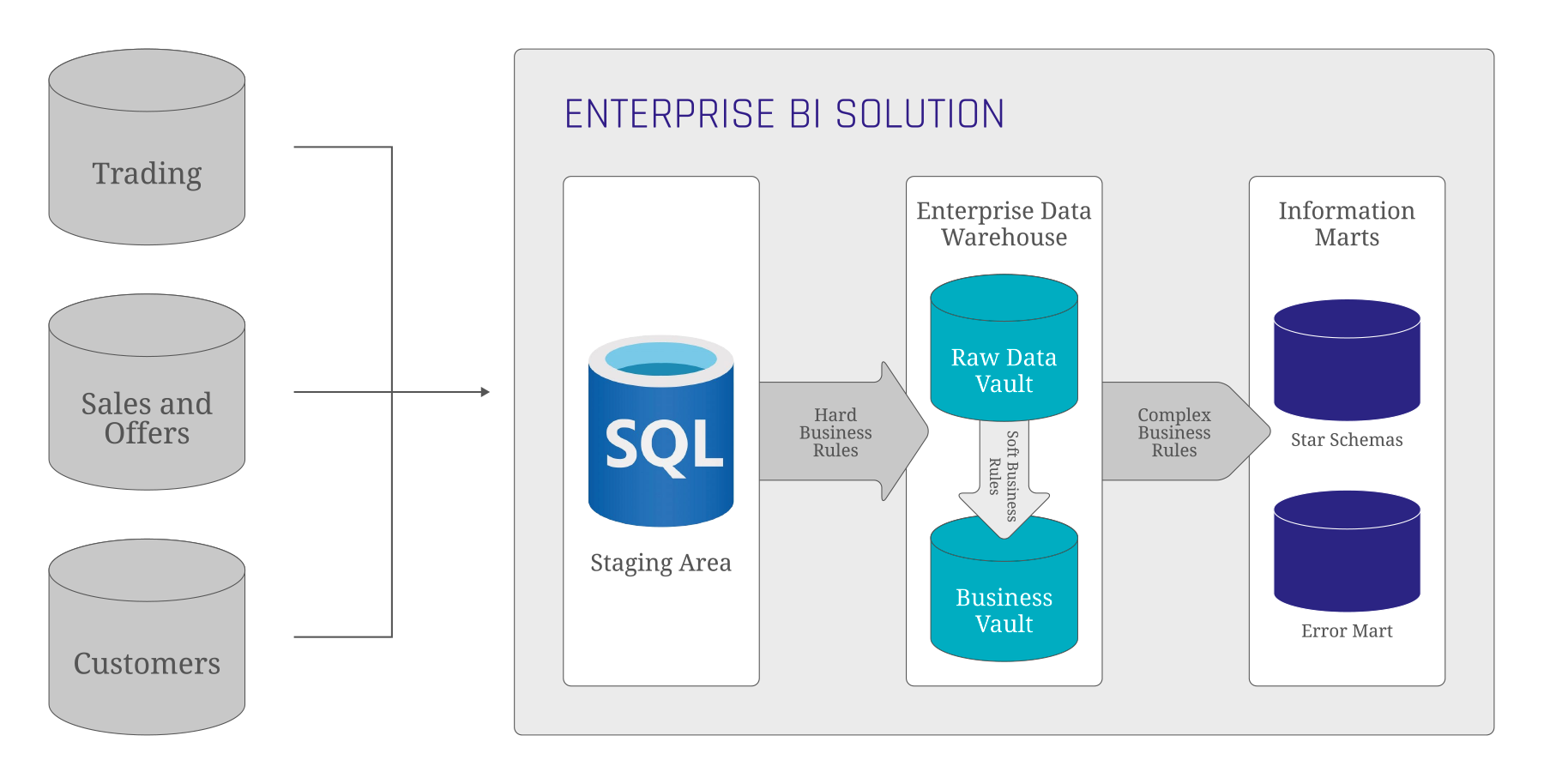In this article, we will analyze the case of a gas provider that is undergoing organizational restructuring, including a remodel of their data warehouse to improve time responses and insights by using Data Vault 2.0.
About the Client
Problem Statement
- Incomplete data integration and suboptimal usage of data leading to inefficient daily operations
- Inability to meet business needs due to rapidly changing demands from users
- Lack of flexibility when facing adjustments or modifications of current technologies (like closing or opening Data Source Platforms)
- Information silos and high complexity of data harmonization for each business area
The Challenge
- Limited resources for information delivery purposes (on premise infrastructure)
- Adapt to business requirements in an agile way
- Provide highly complex information, needed for strategic business projection (in elements like planning and forecasting)
- Multiple Information Marts dependent on the data warehouse layer
- Deliver near real-time high quality information, so operators can make quick decisions. This is a key aspect of the company’s financial sustainability
The Solution

Tangible Results for the Client
- Optimize operational processes
- Reduce of costs via improved productivity thanks to faster analytics
- Increase agility in the development of business users requirements and changes in the data platforms

Technologies involved
Interested in learning more? Get the detailed case study!

Marc Winkelmann
Managing Consultant
Phone: +49 511 87989342
Mobile: +49 151 22413517
Free Initial Consultation